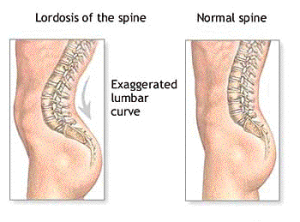“If breathing patterns are off, it can set off a cascade of events that drive injury and dysfunction.” – Mike Robertson.
I talked a little bit about breathing in Game Changers but figured it’s probably best to break it down a little bit further. You see, everything is impacted on your breathing – your posture, mobility, alignment, brain function, stress levels and even mood can all be altered with upset breathing patterns.
And whilst all of this mightn’t seem possible at first, let’s break it down so you can see how much is and can be involved.
Mmm, muscles.
A whole heap of muscles are needed for breathing. And number one on our optimal muscles list for breathing is the diaphragm.
The diaphragm is responsible for getting air in and its reliability for this can be greatly affected by an individual’s posture. For instance, if you are someone that is constantly in an excessive lumbar extended posture (ie. lower back arch – aka booty pop) it can cause your rib-cage to sit higher than optimal. And with that, make the diaphragms job of going up and down a lot more difficult to get that air in.
Next on our list are the muscles that live in and around the rib cage known as the external, internal and innermost intercostal muscles. These ones control how big our ribs can get, and if used properly allow for more air to travel inside.
We’ve also got a whole lot of accessory muscles that can aid in our breathing too. Some of these include the neck muscles, serratus anterior, pectoralis major & minor, upper traps, lats, erector spinae, iliocostalis lumborum, quadratus lumborum, and the subclavius.
Hundreds and thousands.
Between 20,000 and 21,000. Breaths. Per day.
If you were doing that many reps of chin ups, you’d have a pretty gnarly upper body on you, regardless of the fact that you may or may not be performing them optimally. True?
So now think about it in the circumstance of breathing those 20,000+ breaths every day in a non-optimal fashion. The result would be what is known as a ‘toned’ body. But not a nice toned body that a lot of people embark on a fitness regime for (ie. the fab tight body.). The bad kind.
Toned.
Stressed. Unable to relax. Trouble getting to sleep and staying asleep. Does any of that sound familiar to you? Well, you could be someone that is constantly in this bad ‘toned’ state.
Some signs of being in this state can be having a forward neck poke, constantly tight in the lats/pecs/neck, walk around with ILS (imaginary lat syndrome…c’mon you know the type. The ones that walk around like they’re carrying watermelons), or even have, like I mentioned above, a heavily lumbar extended posture.
Toned can be good.
Being toned can of course have its positives too though. Say, when you’re about to perform a deadlift, for example. It’s pretty necessary to have more of a strict and tighter body overall to save yourself from injuries.
But the key here is being able to turn it on and off when necessary, and not walk around all day in this heavy sympathetic and toned state.
Stressed and toned.
Being stressed can lead to poor breathing patterns which can lead to being toned. And on the flip side, breathing bad can lead to you being stressed which can then also lead to you being toned. Vicious cycle, right?
But when we’re breathing correctly, we give our body more of an opportunity to shift from a sympathetic state (our fight or flight state) to a parasympathetic state (our rest and digest state) for when we’re trying to have some mad chill time or even get to sleep.
Silly brain.
Since our brain doesn’t really give a damn how it gets its air, it is happy to compensate when it can as long as it, you know, keeps us alive. And when it is necessary, it compensates quite well by breathing more so through the neck muscles (scalenes and sternocloidomastoid), the lats and even the pectoral minor (yep, quasi posture anyone?). This over time becomes your brains ideal way to breathe and can even lead to posture upsets.
Teach me how to breathe.
Alright so let’s get y’all people breathing right. We’re going to go through the most basic form known as supine breathing. Working on the most basic breathing exercise initially before building up to being able to breathe optimally during intense demand/exercise is ideal.
I might save the progressions for a future post as this one is already getting too eye-blurry friendly.
Supine breathing:
- Lie on your back with your knees bent and lower back relaxed so that it is touching the ground.
- Next take a super deep breath in through your nose so that you fill your entire ribcage and stomach up with some of that tasty O2 (if you have trouble filling up your stomach with the air, try to think about “pushing” the air deep inside you).
- From there, hold the air for a 3-5 second count.
- Exhale forcefully via your mouth so that you rid your body of it completely and again hold your newly fully exhaled body for a 3-5 second count.
- Repeat for 8-10+ reps.
You also have the option of performing this same breathing routine face down on a solid surface. This will give you more resistance when you’re trying to perform the breaths. Good method. And both relatively simple.
Give it a go. I guarantee it will help you with not only your training, but your lifestyle as well.
Any questions post ‘em below.
Have a good week!






